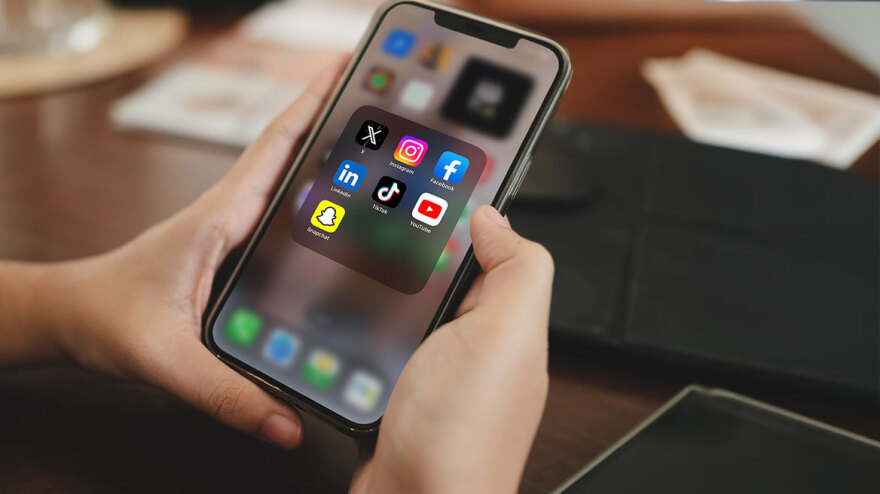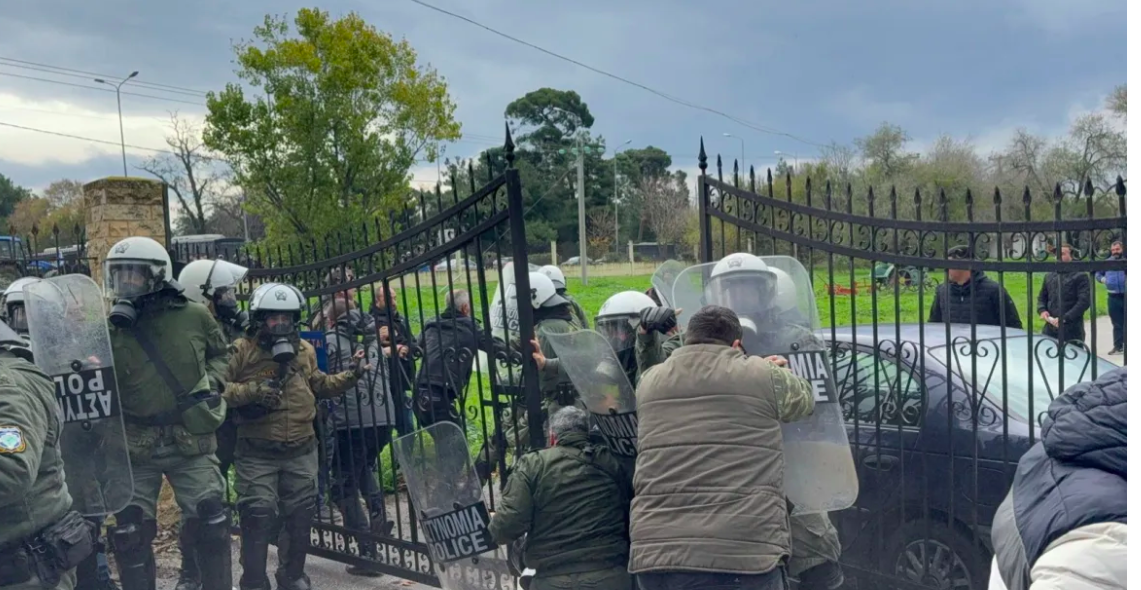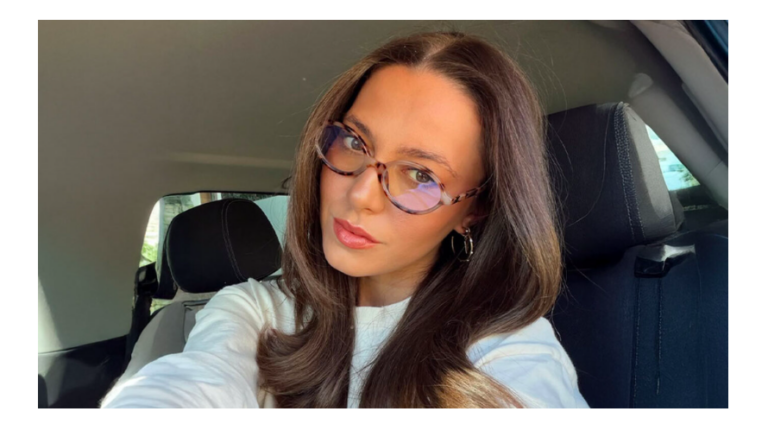Famous TV presenters, internationally renowned models, actresses, and other individuals who have found a business outlet in the social media space are being targeted by the Independent Authority for Public Revenue (AADE) for acting as influencers. The reason? Their opulent lives and products they promote on social media, their partnerships, their business activities, and more, don’t seem to be consistent with the income they declare to the Greek tax authority.

For reasons of tax fairness, but also to secure revenue to fund tax cuts and benefits to be announced in September by the Prime Minister at the TIF, the mechanisms of the AADE are putting provocative and branded tax evasion under the microscope. Utilizing the special Risk Analysis algorithm, they are conducting thorough investigations on 20 influencers. A hot list that includes over 5 presenters, 6 well-known models, and one actress… businesswoman.
After the posts the Greek Tax Authority
All 20 influencers devote a very large part of their daily lives to promoting their businesses, leveraging their reputations for commercial partnerships and product promotion on social media. For them to fall on their knees, accountants and lawyers have already begun with the tax authorities, representing auditees who feel that they are being “touched” by the audit to show remorse (even if only in the nick of time, before the final findings) or to cover outstanding issues that they left open during their commercial involvement with social media (start-ups, retroactive declarations of agreements, etc.etc.) or to justify in any other legitimate way the “benefits” of any kind (in kind or in money) that they perceive that the audit will reveal.

But they’re not the only ones being targeted. The findings collected by the AADE on the methods and transactions carried out by the 20 auditees will be a “compass” for a wave of similar audits to follow. The issue of concern to the authorities and the auditees is being asked to prove whether the income from these activities is declared legally or concealed.
Controls with special software
The audit is not done randomly. The AADE has lists available from the Ministry of Development of influencers who have not formally started a business. The big “weapon” of the Internal Revenue Service auditors is modern technology and the Risk Analysis algorithm developed by the AADE, i.e. special software that analyses and compares financial and digital data by scanning bank transactions, income, and social media posts. The aim is to identify cases where declared incomes do not correspond to the luxurious lifestyle demonstrated by influencers. The AADE investigation is based on opening and cross-checking bank deposits, recording and correlating all social media posts made by the auditees, as well as analyzing the income stream they declare from partnerships.

“Forgot” the GEMI
The audit of Greek influencers initially conducted by the Ministry of Development found, among other things, that all of them – that is, 100% of the sample – are engaged in commercial activity. However, only 25% – and not always in a completely clear way – disclose to the consumer that the content of their posts has a commercial purpose (e.g. includes advertisements). 50% (one in two) do not indicate their commercial status to the consumer. Of those who maintain their commercial websites, only 50% state that they are registered with the General Commercial Register (GEMI).
These cases have been taken up to be further investigated by the AADE. The special team that scans social media with the robotic AI system, which runs the Risk Analysis application, singled out cases that are now considered suspicious.
The key faces
According to information from “Thematos”, the audit cordon is tightening, among others, for well-known morning and afternoon TV presenters, who promote expensive brands of clothes, cosmetics, and accessories without declaring the corresponding income.
Specifically:
Presenter of morning and afternoon shows: As an influencer, she promotes specific brands of clothing, accessories, and beauty products through her social networks.
She uses her social media channels to promote her products and services.
Lifestyle show presenter: She works with various companies promoting not only the products she wears but also the places she visits and stays, showcasing a luxury lifestyle.

She travels with her friends and associates, and she also travels with the people she lives with, living a lifestyle that showcases the lifestyle of her lifestyle.
Occasional television presenter (panel): She has incorporated various products into her lifestyle, promoting them through her social media posts.
A very well-known model with an international career and presence in social “events” in Greece and abroad: She has collaborations with well-known clothing and accessorize companies and often promotes luxury products through posts and collaborations on social media,
Strongly, he has also been involved in social media and social media campaigns in various social media outlets and social media outlets.
Famous model who has been intensely involved in lifestyle media with her personal life: Alongside the catwalks, she is active in promotional activities of major cosmetic and accessory brands, appearing in well-known promotional events.
Big-name actress with significant social media presence and influence: She uses her popularity for commercial partnerships with brands, promoting clothing, travel, and products.
The vetting process includes advanced analytical techniques, such as comparing reported income with spending, analyzing banking transactions, and asset mapping. Auditors study social media posts to identify hidden business deals and income not reported to the IRS.
They were betrayed by spending
The fines for those found with undeclared income are hefty. Already, a well-known influencer has been ordered to pay a €270,000 fine as an audit found he hid €350,000 from Instagram sales.
The authorities are not just limited to social media but are looking into whether and how they cover expenses for luxury living, travel, boats, etc. For example, they are checking whether purchases or rentals of expensive cars in which they appear to move around are made through “private agreements” and offers for social media promotion purposes or through legitimate short-term rentals. The AADE’s Task Force examines all changes in their assets and compares whether they are supported by their taxable income or derived from their online activities (such as postings, partnerships with companies, and advertising campaigns) to determine whether the income from these activities has been properly declared. Based on their profile, potential revenue is calculated based on their followers, likes they garner, and the informal “price list” of the market. Thus, an “estimated income” is formed for each auditee based on risk analysis techniques.
They are “burned” by the dates
In addition, the credits, withdrawals, and payments they make through bank accounts are investigated to see if they are consistent with their regular earnings and the annual income they declare in their tax returns. The aim is to uncover the money trail and all critical dates on which money appears to change hands or assets are acquired. With all this data, indirect control techniques are applied, which include:
Liquidity analysis: The taxpayer’s cash flow is examined by comparing income to expenses to determine if there are unexplained increases or decreases in liquidity.
Net worth analysis: Evaluate the change in the taxpayer’s net worth in a given period by considering reported income and expenses to identify possible unexplained increases in net worth.
Checking bank deposits and cash withdrawals: Compare bank deposits and cash withdrawals with reported income and expenses to identify discrepancies that may indicate unreported income.
In such cases, auditees are asked to provide explanations but often admit themselves to having committed tax evasion, filing amended income tax returns on their own to avoid the -even- worse for them. In contrast, in the case of the well-known influencer who sold clothes and accessories without issuing tax documents, the audit revealed that in two years he had concealed income of 350,000 euros and was asked to pay a fine of 270,000 euros, meaning no tax on the profits he concealed, but almost 80% of everything he received.
In addition to the tax-type checks, the Task Force of the AADE investigates and identifies in their social media posts, photos, and dates of their travels, to link other social events or events such as, for example, social events, inaugurations, trade presentations, weddings and baptisms. Transactions that may be made informally, such as accommodation and hospitality expenses, in-kind benefits, or other payments for which legal documents are not issued. The AADE thus focuses on any possible disguised commercial or business activity that may be concealed from the tax authorities.
The followers… of the tax authorities
Executives with knowledge and expertise in modern technologies are utilized in conducting audits. The core of the special task force on black money in social media is made up of 7-8 people attached to the Directorate of Operational Control Planning (DIESEL). They are tasked with identifying cases of tax evasion by influencers, celebrities, and others who are active digitally without declaring their real incomes. In these audits, the special task force of AADE uses advanced data mining tools, collecting data from posts, hashtags, and mentions that reveal connections between influencers and brands.
Followers and revenue
Nano Influencers
From 1,000 to 10,000 followers, estimated revenue from 20 to 100 euros per post
Micro Influencers
From 10,000 to 50,000 followers, estimated revenue of 30 to 200 euros per post
Mid-Tier Influencers
From 50,000 to 500,000 followers, revenue from 80 to 650 euros per post
Macro Influencers
From 500,000 to one million followers, revenue from 150 to 1,500 euros per post
Mega Influencers
Over one million followers, revenue of over 1,500 euros per post
Instagram – per post
Nano Influencers
€20-€100
Micro Influencers
€100-€500
Mid-tier Influencers
€500-€2,000
Macro Influencers
€2,000-€10,000
Mega Influencers
€10,000+
TikTok – per video
Nano Influencers
€50-€200
Micro Influencers
€200-€1,000
Mid-tier Influencers
€1,000-€5,000
Macro Influencers
€5,000-€20,000
Mega Influencers
€20,000+
YouTube – per video
Micro Influencers
€200-€1,000
Mid-tier Influencers
€1,000-€5,000
Macro Influencers
€5,000-€20,000
Mega Influencers
€20,000+
Extra Charges
Instagram Stories
€50-€2,000
depending on the size of the influencer
IG Reels/TikTok Challenges
€500-€10,000
YouTube Sponsorship
(concerning video):
+20%-50%
on the original price
Collaboration packages (e.g. quarterly posts): discounts are often offered
Ask me anything
Explore related questions





